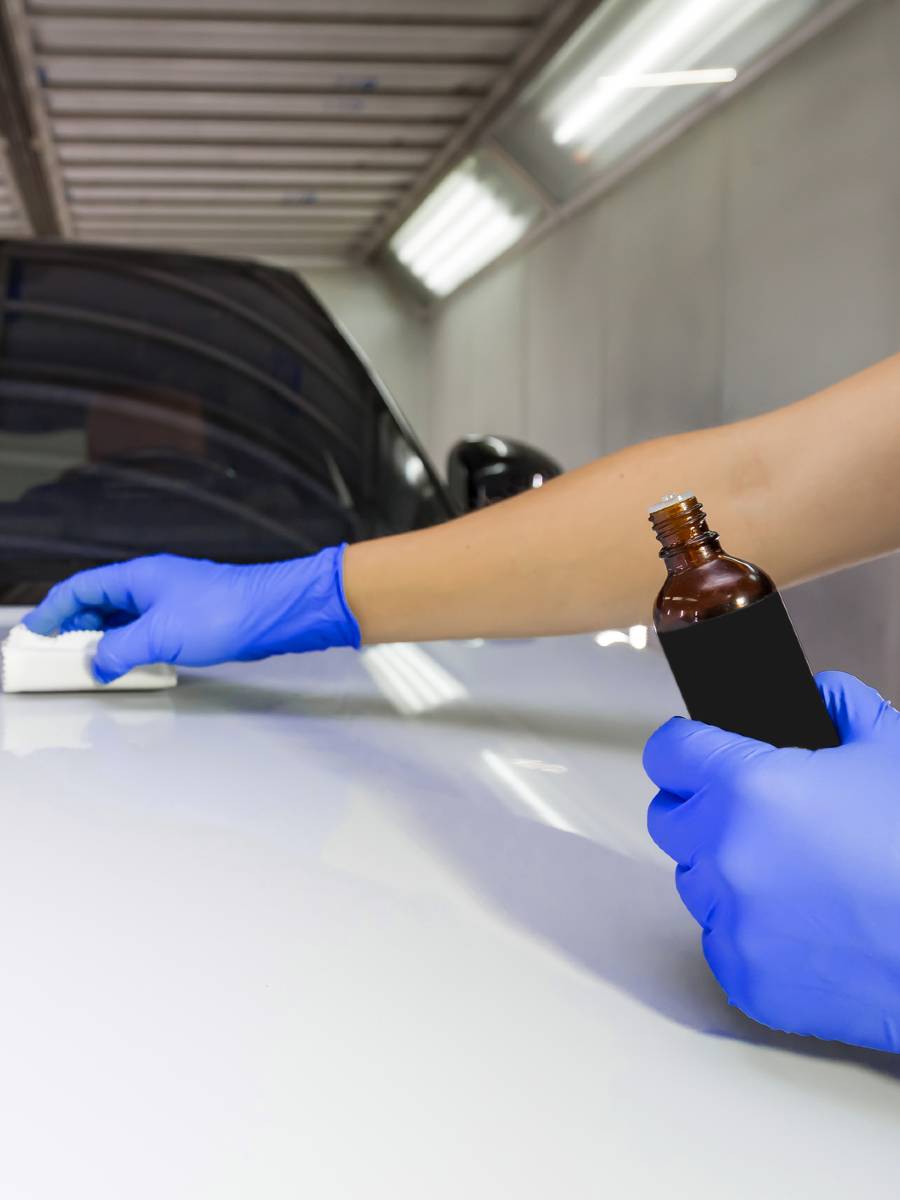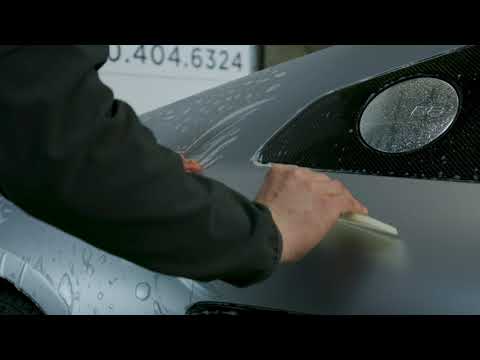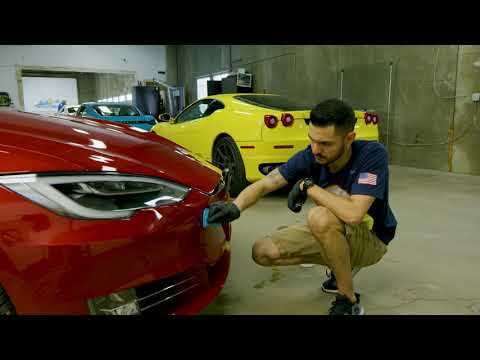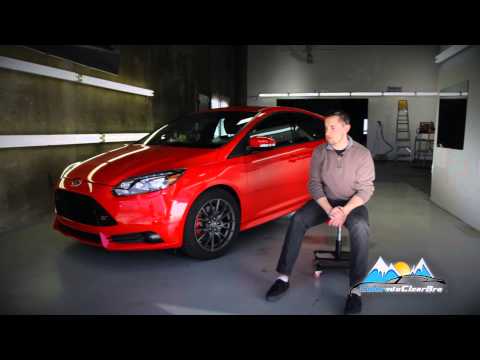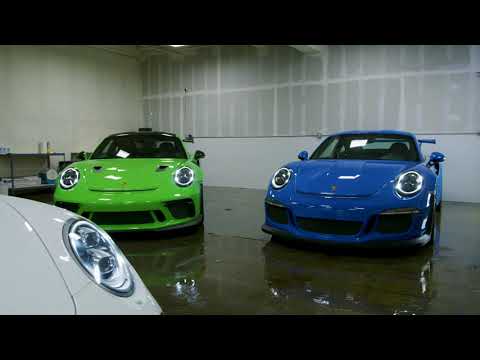Ceramic coating and paint protection film (PPF) are two popular options for protecting car paint. The key difference between the two is that ceramic coating is a liquid polymer applied to the car's exterior, while PPF is a thin, adhesive film applied to the surface.
One of the main similarities between ceramic coating and PPF is that they provide a layer of protection against scratches, UV rays, and environmental damage. Both options also offer hydrophobic properties, repelling water and making the car easier to clean.
Ceramic coating is known for enhancing the gloss and shine of the paint, as well as providing long-lasting protection. On the other hand, Denver PPF is more effective in preventing rock chips, scratches, and other physical damage to the paint.
While ceramic coating and PPF provide protective benefits for cars, the key differences lie in their application methods and specific protection areas. Drivers may choose based on their priorities for enhancing aesthetic appearance or maximizing physical preservation.
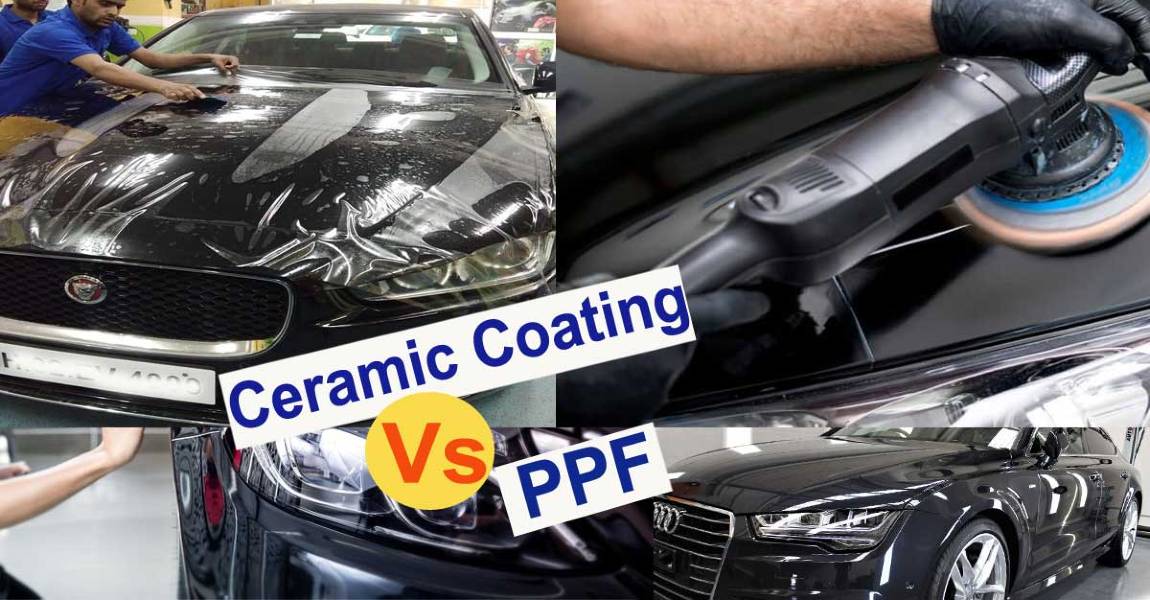
Table of Contents
- Which Is the Best Auto Clear Bra Option?
- Ceramic Coating
- What are the Advantages of Ceramic Coating?
- Best Ceramic Coating for Cars
- A Ceramic Coating with Paint Sealer and Wax
- Paint Protection Film (PPF)
- What are the Advantages of PPF?
- PPF with Ceramic Coating
- What are the Different Comparison Factors?
- What's the Difference in Durability and Longevity?
- Installation Process and Requirements
- Maintenance and Care
- What's the Cost of Ceramic vs PPF?
- Conclusion
Which Is the Best Auto Clear Bra Option?
Car owners often seek protection for their vehicle's paint to maintain its appearance and value. Two popular options for this are ceramic coating and paint protection film (PPF), also known as auto clear bra.
Ceramic coating is a liquid polymer applied to the car's exterior surface. It chemically bonds with the factory paint, creating a hydrophobic layer that repels dirt, water spots, and other contaminants. Ceramic coating is known for its long-lasting protection and ability to enhance the paint's shine.
On the other hand, paint protection film is a transparent, urethane material applied to the vehicle's surface. PPF provides a physical barrier against road debris, scratches, and chips. It is a thicker and more durable option compared to ceramic coating.
Both options have their own merits, but in terms of overall preservation, PPF is the better choice. It provides a higher level of defense against physical damage, such as rock chips, bug splatter, bird droppings, and scratches.
Ceramic coating can be used in conjunction with PPF to provide additional benefits, as it enhances the film's performance with its ceramic technology. The best option depends on the specific needs and preferences of the car owner.
Ceramic Coating
Ceramic coating is a liquid polymer applied to a car's exterior surface to provide superior protection against various environmental hazards.
It creates a hydrophobic property, meaning it repels water and other liquids, keeping the car cleaner for longer periods.
This coating forms a strong bond with the car's paint, creating a protective layer that can withstand minor scratches, swirl marks, and UV damage. It also enhances the shine and gloss of the car, making it look newer and well-maintained.
When applied correctly, ceramic coating can last for several years, depending on the level of protection and maintenance. This reduces the need for frequent waxing and polishing, making it a popular choice for car enthusiasts and owners who want long-term vehicle protection.
The ceramic coating for cars is a liquid polymer that provides superior protection by creating a hydrophobic property and forming a strong bond with the car's paint, ultimately enhancing its appearance and longevity.
What are the Advantages of Ceramic Coating?
Ceramic coatings, also known as nano ceramic coatings, ceramic paint coatings, or ceramic glass coatings, offer a range of advantages and benefits for vehicle owners.
- One of the main advantages of ceramic coating is the enhanced shine and gloss that ceramic coating provides. This creates a visually appealing finish that makes the vehicle stand out.
- Ceramic coatings offer protection against UV rays and pollutants that can damage the paint and finish of the vehicle. This helps to maintain the look of the vehicle and prolong its lifespan.
- Another benefit of ceramic coatings is the ease of cleaning and maintenance. The hydrophobic properties of the coating repel dirt, grime, and water, making it easier to keep the vehicle clean and looking its best.
The advantages and benefits include a superior shine and gloss, protection against environmental damage, and ease of cleaning and maintenance. This makes it a valuable investment for anyone looking to maintain the appearance and value of their vehicle.
Best Ceramic Coating for Cars
The best ceramic coating for cars provides a durable, high-gloss protective layer that shields the paint from UV rays, water spots, dirt, and minor scratches. Leading brands like Opti-Coat, Ceramic Pro, Adam’s Polishes, and Gtechniq are popular due to their easy application, long-lasting performance, and outstanding hydrophobic properties. These coatings bond with the car’s paint to create a layer that repels water and dirt, reducing the need for frequent washing while maintaining a polished look. A quality ceramic coating can last for years with proper care, offering car owners an efficient and cost-effective way to preserve the appearance and value of their vehicles.
A Ceramic Coating with Paint Sealer and Wax
When considering car paint protection, ceramic coating, paint sealer, and wax are all viable options.
- Application: Ceramic coating requires a meticulous application process, often best left to professionals due to its complexity, whereas paint sealers and wax can be easily applied at home.
- Paint over time: Ceramic coating provides the most durable and long-lasting protection against oxidation, UV rays, and environmental contaminants. Paint sealers offer a moderate level of protection but may need to be reapplied more frequently, while car wax provides the least amount of protection and needs to be reapplied regularly.
A ceramic layer offers the highest level of protection for car paint, though it requires a more intricate application process than paint sealers and wax. It also provides longer-lasting results, making it a popular choice for those looking to preserve the appearance of their vehicle for an extended time.
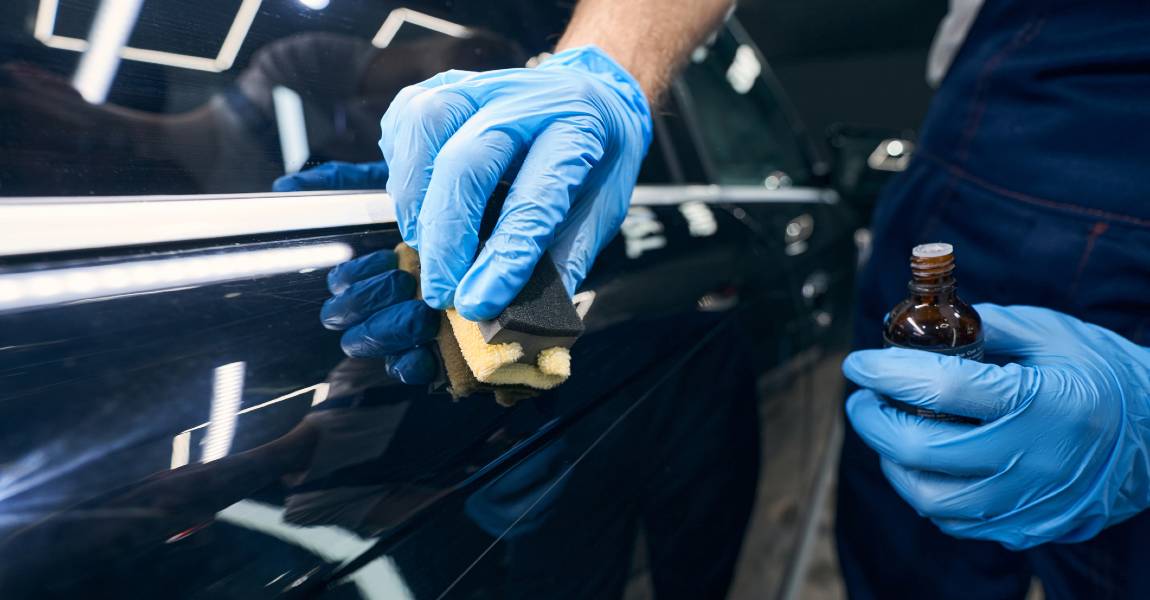
Paint Protection Film (PPF)
Paint protection film (PPF) is a clear, thin, and self-healing urethane film that is applied to the surface of a vehicle's paint to protect it from rock chips, scratches, and other damaging elements.
PPF is a popular choice for automotive enthusiasts and professionals alike, as it provides a high level of protection without altering the vehicle's appearance.
It is designed to be virtually invisible, allowing the paint's natural shine to come through without any added gloss or shine.
PPF can be applied to various areas of the vehicle, such as the hood, fenders, bumpers, and mirrors, providing comprehensive protection to vulnerable areas.
This durable film is resistant to yellowing, cracking, and peeling and can be easily removed without leaving any residue.
PPF is a highly effective and long-lasting solution for maintaining a vehicle's original finish while ensuring its protection against everyday wear and tear.
What are the Advantages of PPF?
Paint Protection Film, or PPF offers several advantages in terms of protecting your vehicle's paint job. PPF is a clear, durable film that can be applied to the exterior of your car to provide a barrier against various types of damage. Some of the advantages of PPF include:
- Protection against light scratches: PPF helps to prevent minor scratches and scuffs from damaging the paint on your car.
- Resistance to water swirl marks: PPF can protect your paint job from the swirl marks caused by washing and drying your car.
- Protection from damage caused by road dirt or road grime: PPF acts as a shield against debris and dirt kicked up from the road, reducing the risk of chips and scratches.
- Resistance to acid rain: PPF provides a barrier against the corrosive effects of acid rain, helping to preserve the appearance of your car's paint.
PPF offers a layer of protection that helps to maintain the appearance and value of your vehicle by reducing the risk of damage from common environmental factors.
PPF with Ceramic Coating
When comparing PPF with ceramic coating, the major difference lies in the level of protection and the method of application.
- PPF (paint protection film) offers optimum protection against road hazards and UV rays and requires professional installation for a seamless finish. It is a transparent layer that shields the paint from chips, scratches, and environmental damage.
- A ceramic coating provides a shinier coat and protects against UV rays and environmental contaminants. It is applied as a liquid polymer that bonds with the vehicle's paint surface, providing a durable layer of protection.
- While PPF is more effective at preventing physical damage from road hazards, ceramic coating is a more attractive option for those looking for a glossy finish and easier maintenance.
Both methods of paint protection have their advantages, and it ultimately comes down to personal preferences and the level of protection required.
![]()
What are the Different Comparison Factors?
Regarding protecting a car’s exterior, there are two popular options to consider: paint protection film and ceramic coating.
Denver Paint protection film, also known as a clear bra, is a physical, transparent layer that is applied to the car’s surface to protect it from rock chips, scratches, and other debris.
Ceramic coating is a liquid polymer that chemically bonds with the car’s paint to create a protective layer.
When comparing the two options, there are several factors to consider.
The protective film provides a physical barrier against rock chips and scratches, offering superior protection in this aspect. However, it can sometimes have undesirable effects on the car’s appearance, such as a visible line where the film ends.
Ceramic coating provides a more uniform and smooth finish but may not offer the same level of protection against physical damage.
What's the Difference in Durability and Longevity?
Paint Protection Film (PPF) and ceramic coatings provide durable protection for vehicle paint but differ in longevity.
PPF typically lasts longer, with a 5-10 years lifespan, compared to ceramic coatings, which may only last 2-5 years before needing to be reapplied. This is due to the physical barrier created by PPF, offering enhanced protection from rock chips, scratches, and UV rays.
Ceramic coatings provide a sacrificial layer that can degrade over time, requiring maintenance to ensure continued effectiveness.
The long lifespan of PPF offers the benefit of less frequent reapplication, reducing long-term maintenance costs.
The potential drawback of PPF is the initial cost automotive paint protection film and the possibility of yellowing over time.
Factors contributing to the longevity of PPF include proper installation, quality of the film, and regular maintenance.
For ceramic coatings, factors such as application technique, quality of the product, and maintenance also play a crucial role in determining their longevity.
PPF and ceramic coatings offer durable protection, with PPF lasting longer and ceramic coatings requiring periodic reapplication.
Installation Process and Requirements
(PPF) and ceramic coatings are essential for maintaining the appearance and longevity of a vehicle's exterior. The installation process requires skilled professionals due to the precise application and attention to detail necessary for a successful outcome.
For PPF, the surface must be thoroughly cleaned and prepared to ensure proper adhesion. Any existing imperfections in the paint must be corrected before the film is applied to achieve a flawless finish. The installation requires specialized tools and expertise to ensure a seamless and durable application.
Similarly, ceramic coatings also require a clean and well-prepared surface. Before the application, the paint must undergo thorough decontamination and correction to remove any surface impurities and imperfections. The skilled professional will then carefully apply the ceramic coating in multiple layers to ensure optimal defense and longevity.
PPF and ceramic coatings provide superior protection against environmental elements, UV rays, and chemical contaminants. The installation process involves meticulous attention to detail and the expertise of a skilled professional to achieve the desired results.
Maintenance and Care
Proper maintenance and care for PPF and ceramic are essential to ensure their longevity and effectiveness in maintaining the vehicle's paint.
PPF requires minimal maintenance, with regular washing using gentle car shampoo and microfiber towels.
Ceramics may require annual maintenance with a specially formulated ceramic coating maintenance spray to rejuvenate its hydrophobic properties.
For PPF, specific cleaning products such as PPF cleaner and sealant are recommended to remove contaminants and maintain their clarity.
Ceramic maintenance usually involves using pH-neutral shampoo and a ceramic coating booster to enhance its durability.
Both may benefit from using a clay bar treatment to remove embedded contaminants.
With proper care, PPF can last up to 5 years or more, while ceramic can last up to 2 to 5 years, depending on the quality of the product and maintenance performed.
By following the recommended cleaning products and techniques, vehicle owners can ensure the ease of maintenance and maximize the lifespan of both.

What's the Cost of Ceramic Vs PPF?
- PPF tends to be more costly upfront than Ceramic Coating, with the price of installation being significantly higher.
- In terms of cost over time, PPF can become the more cost-effective option as it offers a defense against scratches, chips, and other forms of damage.
- Applying a Ceramic layer on top of PPF comes with an additional cost, but it can provide both benefits, including the deeper gloss and enhanced preservation.
- The cost factor of PPF is often a deterrent for some car owners, as it is a more costly auto paint protection option than Ceramic Coating.
- The cost of Ceramic Coating is typically lower, making it a more attractive option for those looking for a budget-friendly way to enhance the look and safeguarding of their vehicle.
Conclusion
In conclusion, for car owners looking for amazing protection and a lasting solution to damages, ceramic coating and PPF are viable choices. Each option offers its unique benefits in terms of appearance and durability. In the automotive industry, ceramic coating and paint protection film have proven effective in safeguarding vehicles from various damages such as scratches, UV rays and environmental contaminants.
The decision between ceramic coating and PPF will depend on the specific needs and preferences of the car owner. While ceramic provides a sleek and hydrophobic finish, PPF offers a thicker and more resilient layer of protection. Car owners need to weigh each option's benefits and drawbacks before deciding.
Both are valuable investments in maintaining the aesthetics and value of a car. This preserves the car's appearance and minimizes the need for frequent detailing and repairs. In the battle of coating vs paint protection, car owners have two solid options for keeping their vehicles in top condition for years to come.
Choose Ceramic Coating for long-lasting shine and protection, or opt for Paint Protection Film for maximum defense against scratches - make the right choice and contact us today!
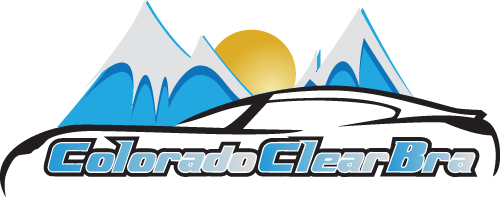




![Ceramic Coating vs. Paint Protection Film for Cars [Clear Bra]](/sites/default/files/2024-01/applying-ceramic-coating-on-vehicle.jpg)
